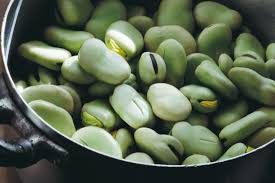Irrigation System for our Garden: What irrigation to put
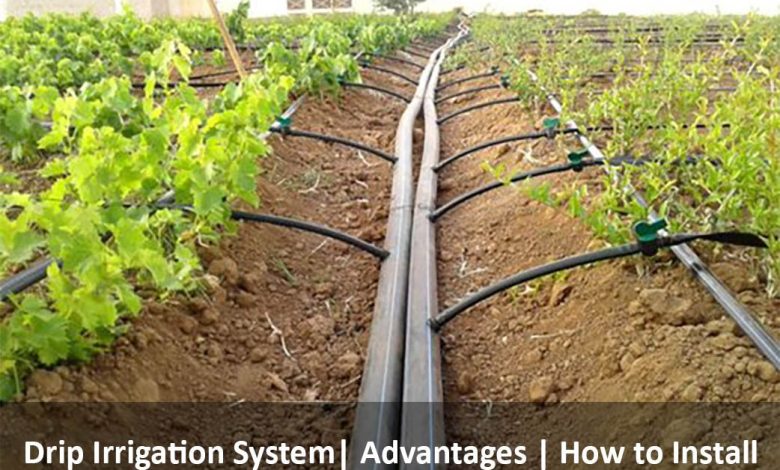
Gravity? Drip? Aspersion? The irrigation system in our orchard is an essential part for the development of our orchard. Therefore, for us market gardeners; in the planning and design we give it the necessary importance as Lucía already told us at the time of her in Planning the irrigation in our orchard.

In this new article I would like to delve a little deeper and talk to you in more detail about the difference between some methods and others, their applications and other doubts that may arise.
Irrigation systems in the orchard
We will try to distinguish the following irrigation systems:
- surface irrigation
- Sprinkler irrigation
- Localized irrigation
Before starting, I recommend that you take into account the irrigation calendars for proper water management according to soil, weather and crop conditions. Water is a treasure!
surface irrigation
Also known as gravity irrigation. It is the most popular method in rural areas and the best known by many of you who have had the opportunity to irrigate an orchard with your grandparents in the village.
The operation consists of applying the water directly to the ground from a point that we will call the head, until reaching the end of the orchard, a point that we will call the tail.
The water goes to the orchard through a distribution network that may well be low-pressure pipes, ditches or any network of channels (gullies) through which the water circulates by gravity.
Where does the water flow?
The water through the orchard with this irrigation system can circulate in three different ways:
- Flooding: The surface of the plot is completely flooded. The water has a total downward movement. It is only advisable in very specific crops (rice).
- Streets: The water has a downward and lateral movement. Fertilizer losses and runoff are reduced.
- Furrows: The water has a downward and lateral movement towards the loins.
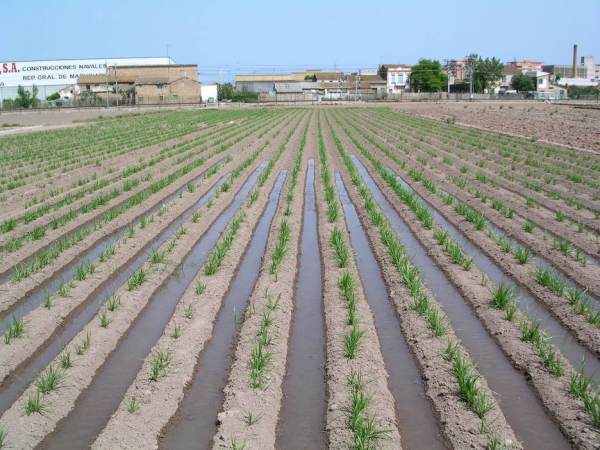
Also, we have to think that the orchard must have a small slope that allows the water to run through it only with the energy provided by gravity. Therefore, it is the cheapest irrigation system in terms of maintenance and installation. It is ideal for flat terrain or gentle slopes and is used for almost any crop.
The advantages of this irrigation system is its low energy cost and that it cannot be affected by any type of atmospheric factor, such as winds or intensive evaporation.
On the contrary, it is an irrigation system that is not suitable for use in our urban garden due to its great expense in water. In the cities we do not have this type of distribution networks for agricultural use. Another problem we have is that it favors the appearance of weeds in spaces free from cultivation (for example, in furrows or in spaces between plants).
Sprinkler irrigation
In this irrigation system, what is intended to be done is to simulate the water coming from precipitation. What better way to water than by making it rain? More or less I imagine that this had to be the question that the creators of this system asked themselves at the time. The water comes out through an element that is the sprinkler, which we will later see that it is not only the one that we can find in the pool of our town.
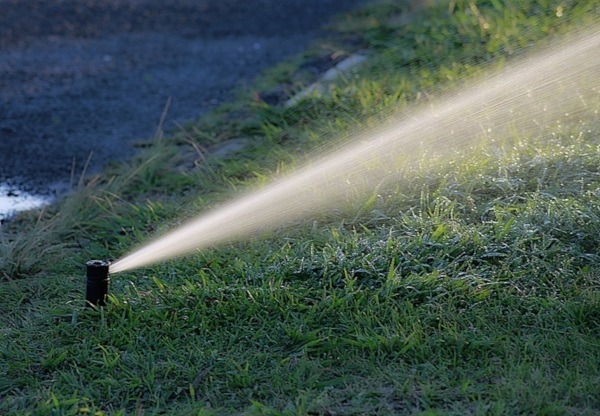
How to make it rain?
One of the differences with the previous system is that now we need to give the water a high head pressure, so that the water reaches the sprinklers with enough force. Therefore, we need a pumping system at the beginning. The water reaches the sprinklers through a network of pipes that must maintain this pressure that we are talking about.
The typical system of a sprinkler irrigation system is made up of a network of main pipes, which are normally buried; and hydrants or water intakes that allow the connection of the network of secondary pipes and branches that are responsible for carrying the water to the sprinklers. Depending on the cultivation that is carried out and the planning that is done, this entire installation may or may not be fixed during a cultivation campaign or for years.
We can differentiate different methods of sprinkler irrigation:
- traditional
- Fixed
- Mobile
- Irrigation machines:
- Pivot
- front advance
This irrigation system allows the farmer greater irrigation automation and allows for better uniformity.Namely; we can program the irrigation in such a way that all the points of the orchard have the same amount of water. So it is not surprising that it has a good irrigation efficiency and its water consumption is lower.
On the other hand, it is an irrigation system that is very conditioned to the weather. If the wind blows or if the climate is very arid, we may have the problem that the drop of water does not reach the plant.
What crops can we use it for?
Well, it is an irrigation system that we can use in those crops that need the soil to be moist, such as; if we have a seedbed with the seedling, we can consider sprinkler irrigation.
drip irrigation
Or localized irrigation. It is the irrigation system that is not of most interest for urban orchards since its consumption is lower and automation is much more advanced with the use of solenoid valves.
As I know that it is a topic that interests you, throughout these weeks we will dedicate an article exclusively to drip irrigation, its installation and handling.
See you in the orchard!

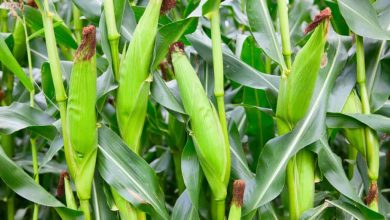
![Photo of Plant Araucaria: [Care, Irrigation, Cultivation, Substrate]](https://www.complete-gardening.com/wp-content/uploads/2022/08/plant-araucaria-care-irrigation-cultivation-substrate-390x220.jpg)
![Photo of White Soil Worm: [Characteristics, Detection, Effects and Treatment]](https://www.complete-gardening.com/wp-content/uploads/2022/08/white-soil-worm-characteristics-detection-effects-and-treatment-390x220.jpg)
